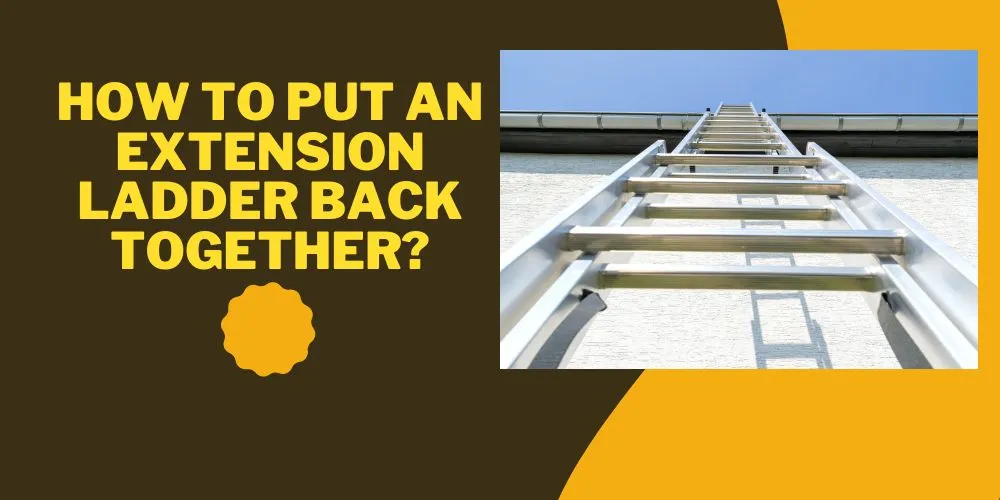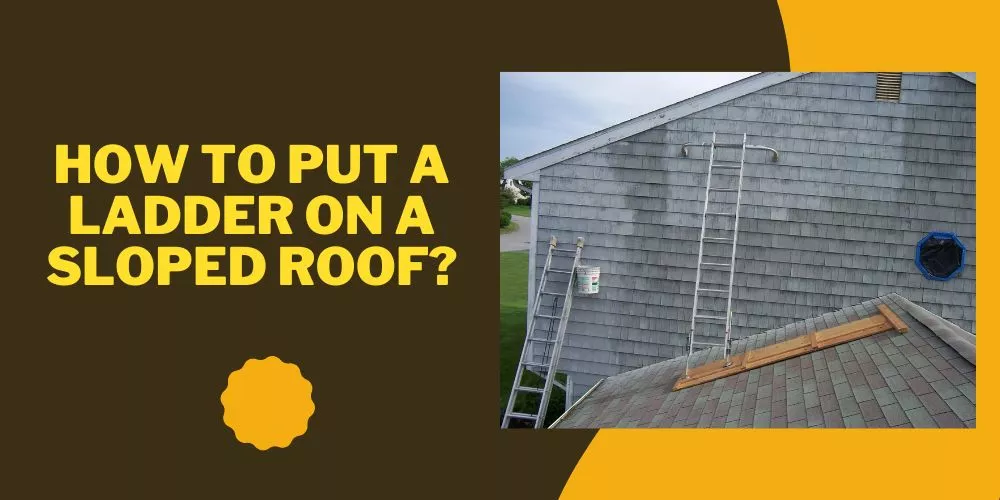There consistently arises a need for every homeowner to undertake some essential maintenance tasks that require a ladder, such as cleaning gutters, replacing light bulbs, or repainting the house.
Special care, however, must be taken when dealing with a structure festooned with vinyl siding.
Due to its nature, vinyl siding can be damaged easily under pressure or from improper handling. This makes the simple notion of leaning a ladder against it somewhat intricate.
In this article, we unveil comprehensive steps on how to lean a ladder against vinyl siding properly without inflicting damage to your home.
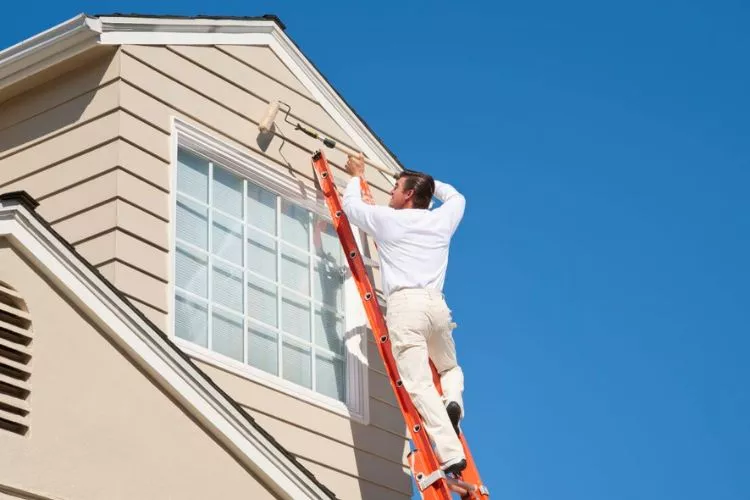
How To Lean A Ladder Against Vinyl Siding? (A Step By Step Guide)
Vinyl siding is highly popular due to its low maintenance and affordability. However, it can be delicate and is prone to getting damaged when subjected to pressure or improper handling.
To ensure you safely lean a ladder against your vinyl siding without risking damage or injury, follow these detailed steps:
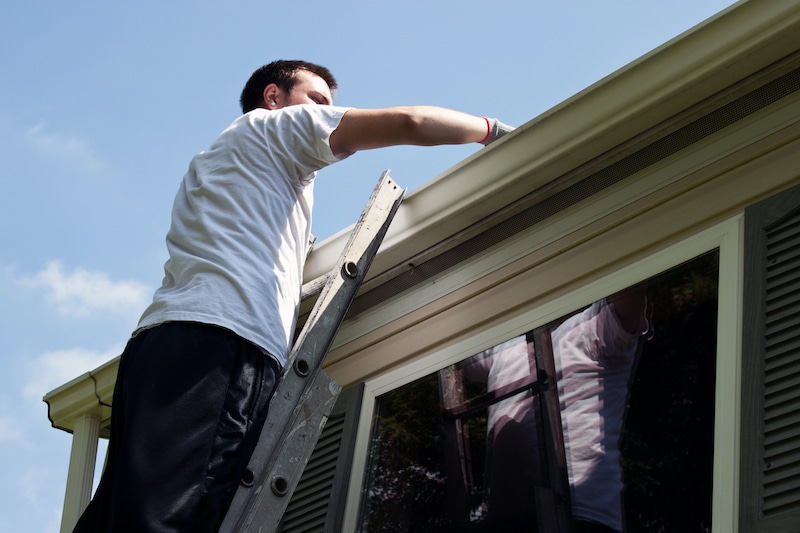
🪜 Identify Your Ladder Type
Your ladder selection plays a significant role in the overall process. For working around vinyl siding, an extension ladder is the best choice. Ensure your ladder is in good condition, sturdy, and can safely hold your weight along with the tools you’ll carry up.
🪜 Choose the Right Ladder Accessories
To avoid direct contact between the ladder rails and your vinyl siding, use protective accessories, such as:
- Ladder stabilizer: It spreads the weight distribution across a broader area and keeps the ladder rails away from the siding.
- Ladder mitts: These padded rubber or foam coverings fit over the top of your ladder and protect the siding from scratches and damage.
- Stand-off arms: These attach to the ladder and provide a stable platform to lean against the siding at an appropriate angle while preventing the rails from touching the siding.
🪜 Set Up the Ladder
- Place the ladder feet on a firm, level surface, ensuring that both feet are fully supported.
- Extend your ladder while it’s still on the ground and ensure all the sections lock securely.
- Incline the ladder in accordance with the 1:4 rule: for every 4 feet in height, the feet of the ladder should be 1 foot away from the wall. This rule helps maintain the optimum angle for ladder stability.
🪜 Install the Ladder Accessories
With the ladder in place, install the accessories mentioned in step 2. Make sure the stabilizer, mitts, or stand-off arms are secure before attempting to climb up.
🪜 Climb Safely
- Prioritize safety by always maintaining three points of contact with the ladder (two feet and one hand or two hands and one foot).
- Avoid carrying tools in your hands while on the ladder. Use a tool belt or pouch to ensure your hands are free for added stability.
- Don’t lean too far to reach a spot, as it can destabilize the ladder. If necessary, descend and reposition the ladder before climbing back up.
🪜 Ladder Removal and Inspection
Once you’ve completed your task, carefully remove the ladder addons, ensuring not to scratch or damage the vinyl siding. Before storing the ladder, visually inspect your siding to ensure no dents, scratches, or other damage occurred during the process.
Preventative Steps: Pre-Task Assessments for Safely Utilizing a Ladder Against Vinyl Siding
Preventative measures can often help avert unforeseen problems and potential hazards. Pre-task assessments such as checking weather conditions, inspecting vinyl siding, and other steps can be instrumental in ensuring safety.
Here are a few areas to focus on before leaning a ladder against vinyl siding:
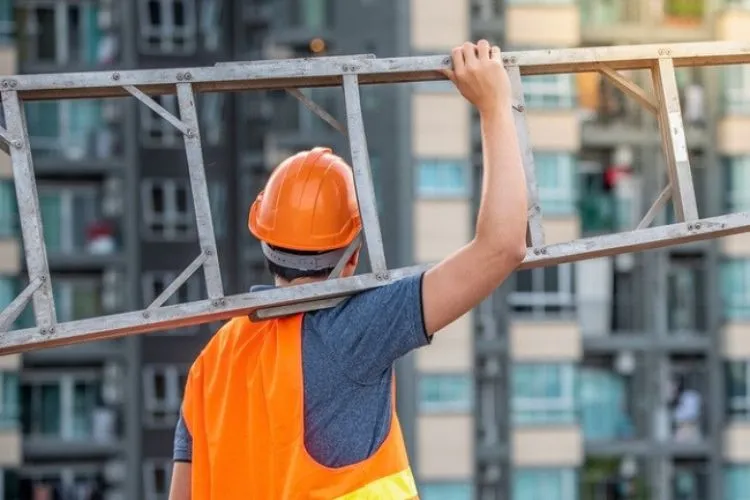
🪜 Checking Weather Conditions
Inclement weather can add an unpredictable dimension to any task. High winds can destabilize a ladder; rainfall can make both the ladder and the ground slippery, increasing the risk of a fall.
- Working in Clear Weather: Prioritize working on bright, calm, and dry days, as stability is significantly improved under such conditions.
- Delay Tasks during Adverse Weather: If the forecast predicts adverse weather conditions (rain, windy conditions, or a storm), delay your work until the weather is clear to ensure safety.
🪜 Verifying the Condition of Vinyl Siding
While vinyl siding is deemed sturdy, changes in weather can make it brittle or warp (in excessive heat). Make sure to inspect it carefully before setting up a ladder.
- Looking for signs of wear or damage: Visually inspect the siding for any signs of cracks, loose sections, wear, or deterioration. Leaning a ladder on damaged siding could worsen the condition and lead to further repair costs.
- Assessing the sturdiness of your siding: Cautiously press your hand against various parts of the siding to check its stability and strength. It should feel solid and firmly attached. If it feels weak or wobbly, avoid leaning a ladder against it until necessary repairs are completed.
🪜 Other Precautionary Steps
These may include:
- Confirming ladder’s condition: Always check the ladder’s condition, ensuring it’s sturdy with no broken or missing parts, feet are non-slip, and locking mechanisms work perfectly.
- Clearing the ladder’s area: Ensure the area around the ladder is clear of potential hazards, such as rocks, tools, or children’s toys, which may cause tripping.
- Securing pets or distractions: Make sure pets or children are safely away from your working area. Unattended children or pets can risk their safety and also destabilize the ladder.
Taking the time to carry out these preventative steps will not only avoid potential mishaps but also ensure the task at hand is done smoothly and efficiently.
Understanding Different Types of Ladders: especially when working near vinyl siding
The market overflows with a plethora of ladder types, each boasting its own set of features, advantages, and shortcomings. Understanding the key differences among them can aid in making an informed selection, especially when working near vinyl siding.
Let’s delve into the most common types:
🪜 Step Ladders
Step ladders are self-supporting ladders that do not need to be leaned against a surface. Suitable for tasks like interior painting, cleaning, or changing bulbs, they pose less risk for vinyl siding as they don’t need to lean against it.
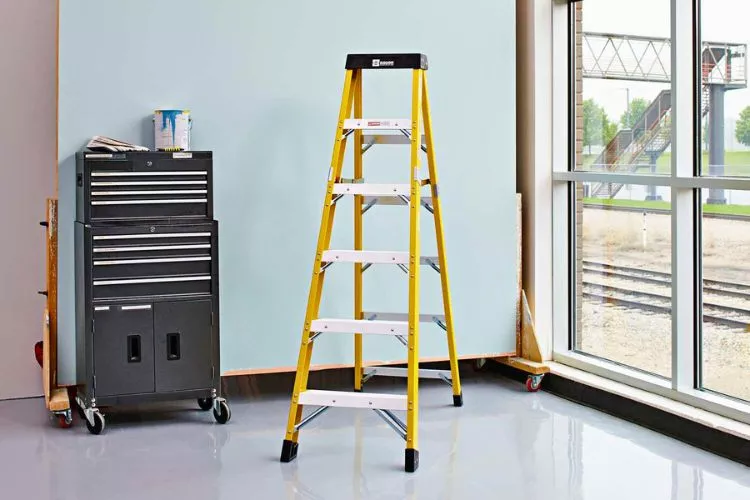
Advantages
✅ Stability: Given their A-Frame construction, step ladders offer a high degree of stability.
✅ Ease of Use: They require no wall support, offering flexibility of placement and use.
Disadvantages
❌ Limited Height Access: Step ladders often fall short when it comes to tasks requiring high reach, like roof or gutter maintenance.
❌ Transport Challenges: They might be hefty and challenging to move around.
🪜 Extension Ladders
Extension ladders, with their adjustable lengths and ability to lean against surfaces, let you reach elevated heights like roofs and gutters with ease.
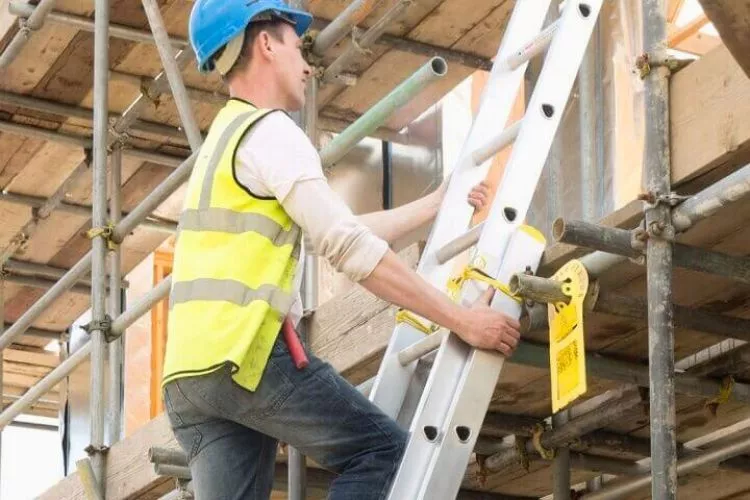
Advantages
✅ Greater Reach: This ladder type offers access to areas high above the ground, like roofs or tall trees.
✅ Portability: They are usually lighter than step ladders, therefore easier to move and store.
Disadvantages
❌ Requires Wall Support: As they need to lean against a surface, care must be taken while setting up on vinyl siding to avoid damage.
❌ Risk of Instability: Poor setup or use on uneven surfaces can lead to instability.
🪜 Multipurpose Ladder
Multipurpose ladders are a combination of step and extension ladders. Their versatility allows users to configure them for a wide variety of tasks.
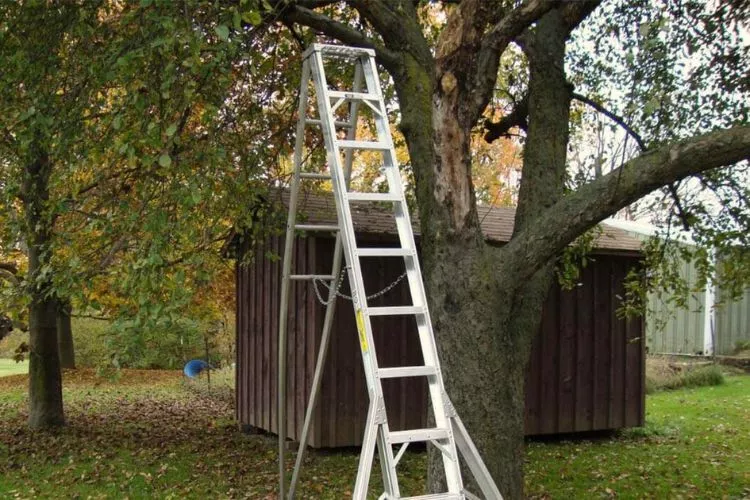
Advantages
✅ Versatility: They can function as an A-frame ladder, a lean-to ladder, or even a scaffold system.
✅ Space-Efficient: Given their multifunctionality, they may eliminate the need for multiple ladders.
Disadvantages
❌ Weight: Their added versatility often comes with added weight.
❌ Complexity: They can be more complex to use, given their various configurations.
Although each type has its pros and cons, always choose the ladder type most suitable for your task at hand. When it comes to vinyl siding, using a ladder with accessories designed to protect the siding will ensure the best outcome with minimal risk to your home’s exterior.
Post-Task Inspection and Basic Repairs
Once your task is complete, a careful post-task inspection can help identify any issues that may have accidentally arisen during the process. Foreshadowing potential problems can save you costly repairs down the line.
Here’s what you need to pay attention to:
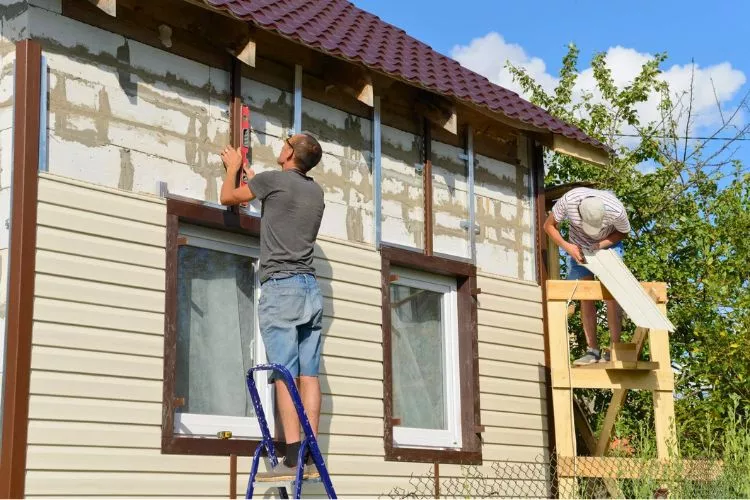
🪜 Conducting a Thorough Inspection
After you’ve dismounted and cleared away the ladder, take a walk around your house, inspecting the siding closely, especially in areas where your ladder was in contact.
- Spotting Unseen Damage: Look for signs of scratching, denting, or cracking. Even slight pressure from the ladder can cause little, almost invisible, cracks in vinyl siding. Also keep an eye out for any signs of loosened or dislodged siding boards.
- Inspecting the Integrity of the Siding: Ensure the siding still sits firmly on the house. If it appears loose, secure it back into place as quickly as possible to prevent further damage.
🪜 Repairing Minor Scratches or Dents
While vinyl siding is quite resilient, minor scratches or dents can occur with ladder use. Let’s discuss how to perform basic fixes:
- Using Vinyl Siding Repair Kits: Minor scratches or cracks can be repaired using a vinyl siding repair kit, available at most home improvement stores. Follow the instructions mentioned in the kit for the best results.
- Replacing Heavily-Damaged Sections: If a section is heavily damaged, your best course of action may be to replace that piece of siding entirely. If you are not comfortable doing it yourself, consider hiring a professional.
🪜 Monitoring Over Time
After the inspection, continue to monitor the inspected areas over a period of time for any changes or signs of damage.
- Regular Checks: Conduct regular checks, especially after extreme weather conditions. This can help catch any recurring issues quickly.
- Look for Mold or Rot: If water has penetrated via a crack, you may begin to see mold or rot. Prompt repair can prevent further, more serious damage.
By being vigilant and taking the time to not only inspect but also undertake necessary repairs promptly, you can prevent minor issues from escalating into larger, more costly ones.

